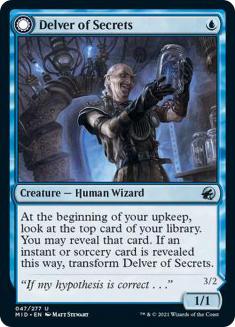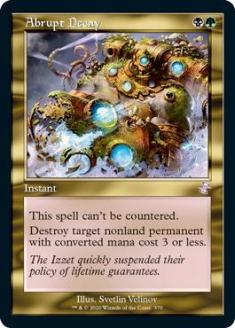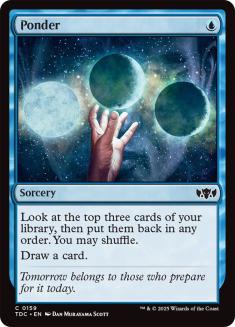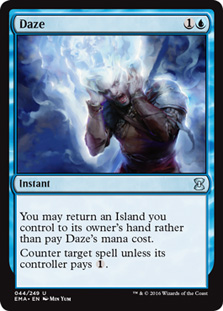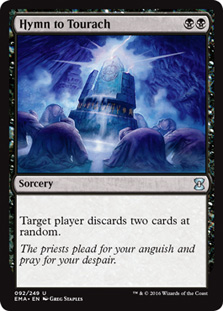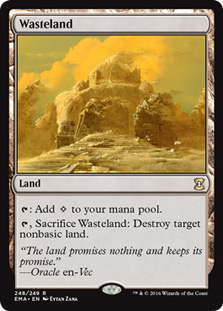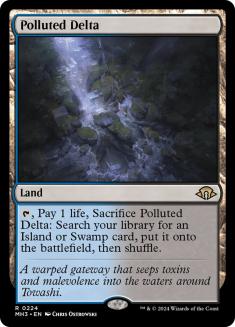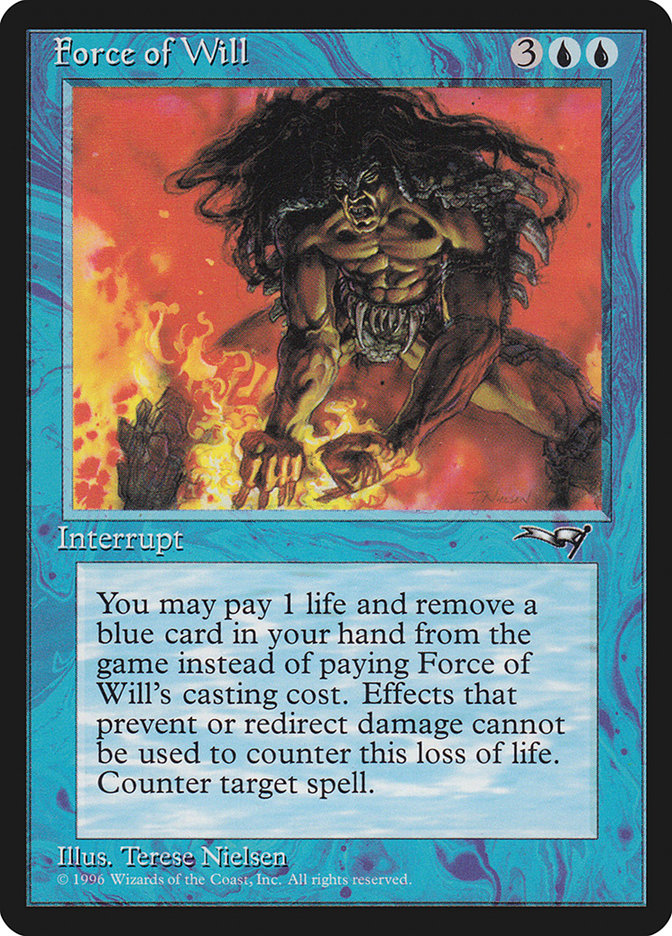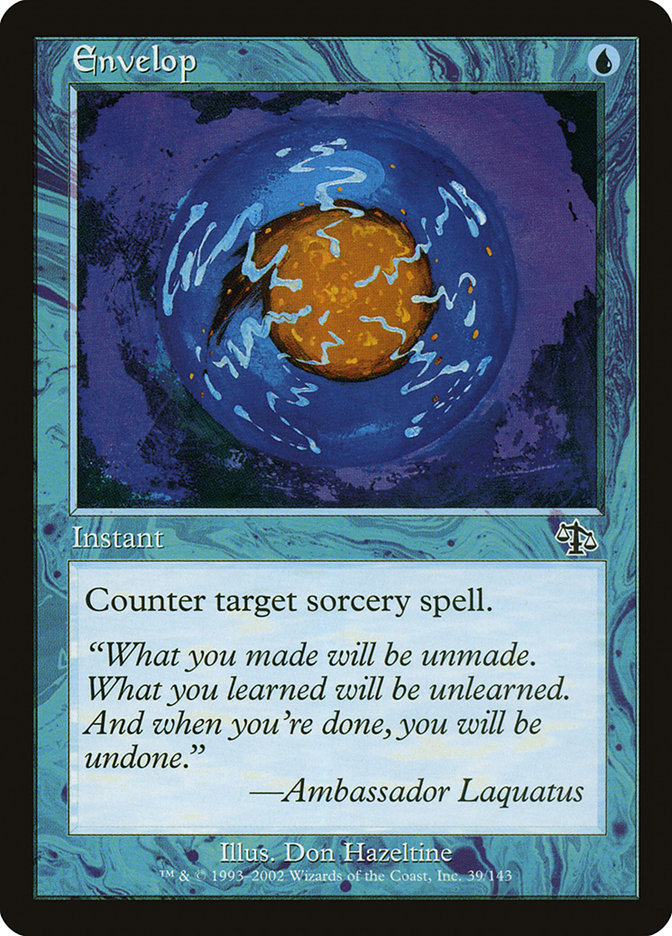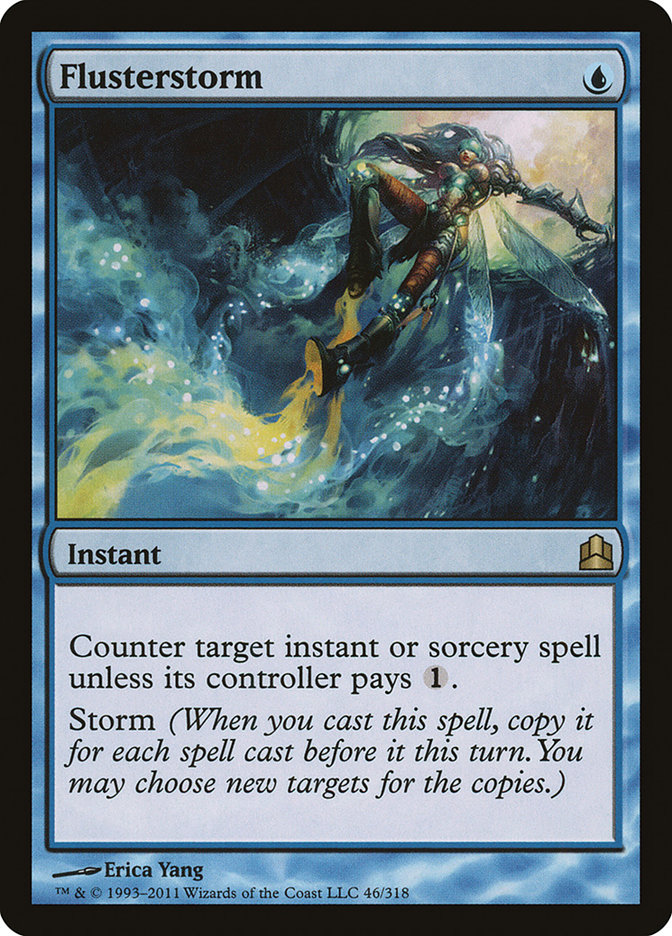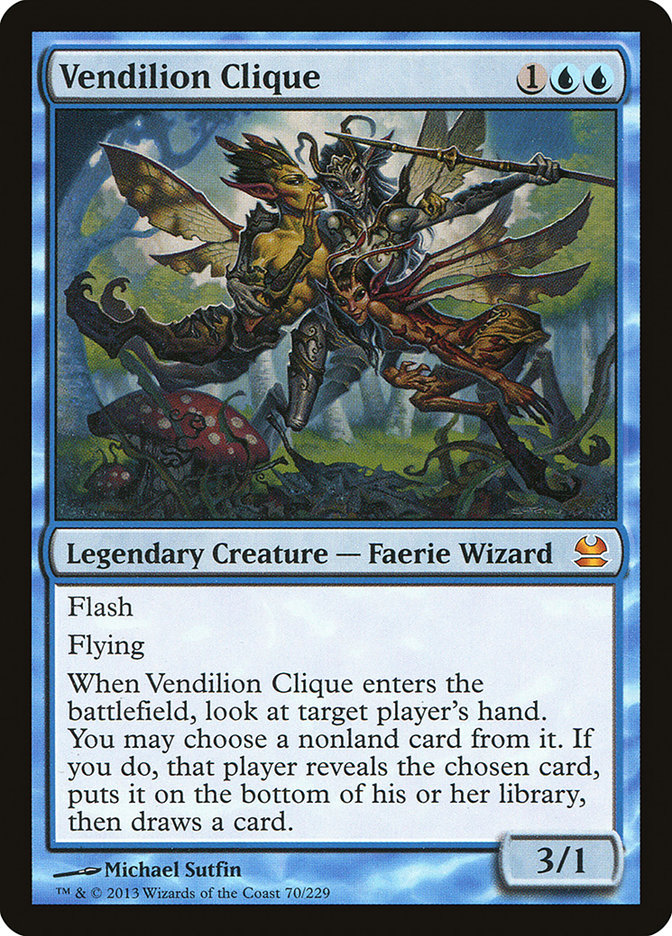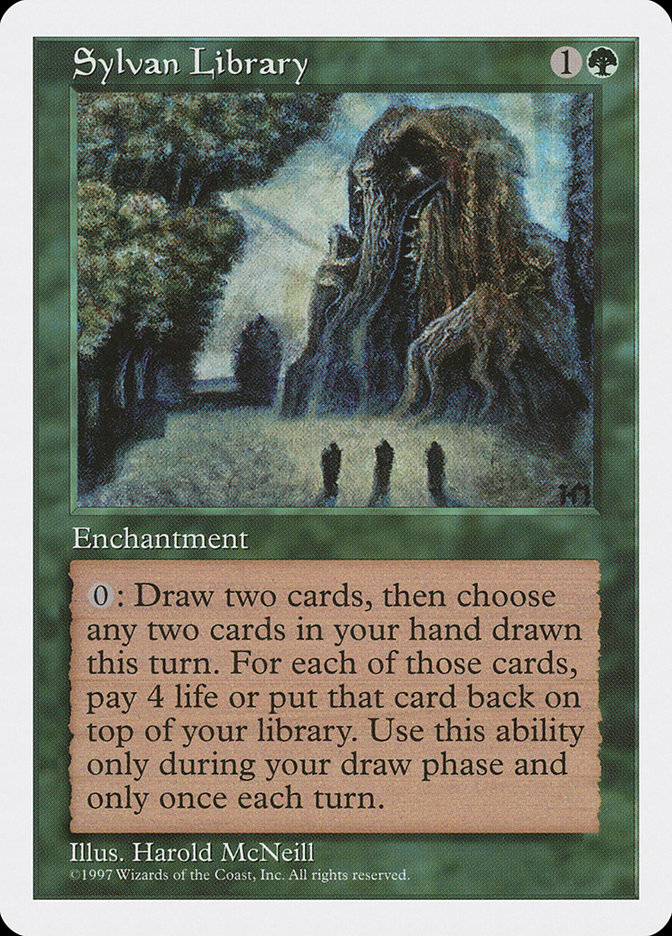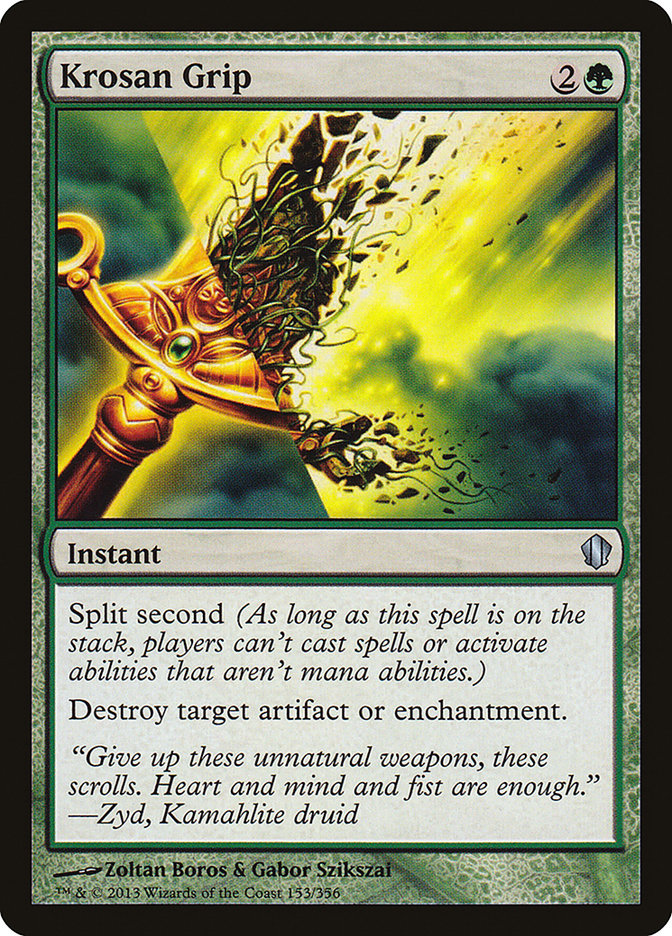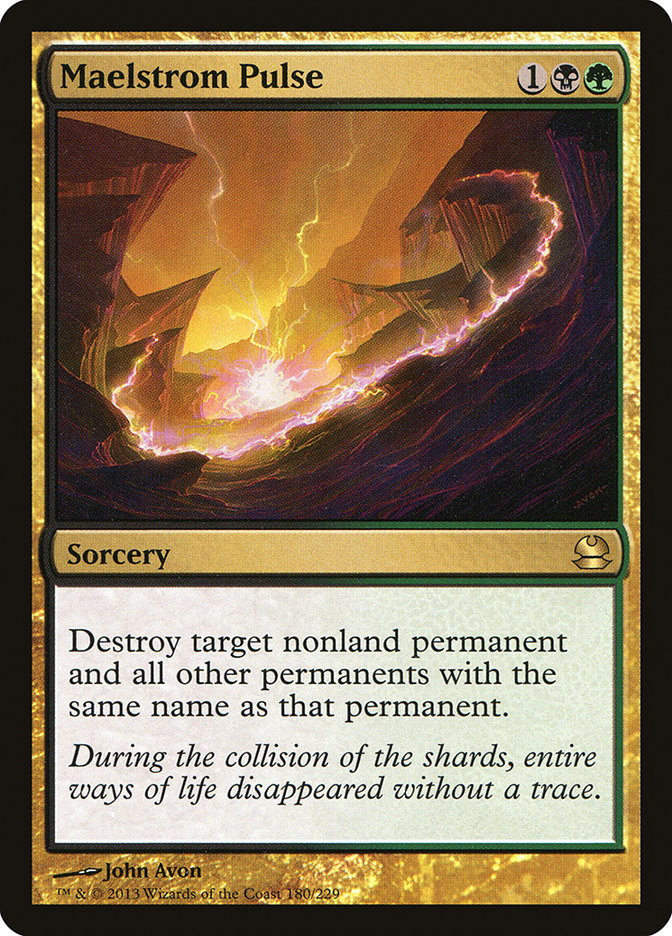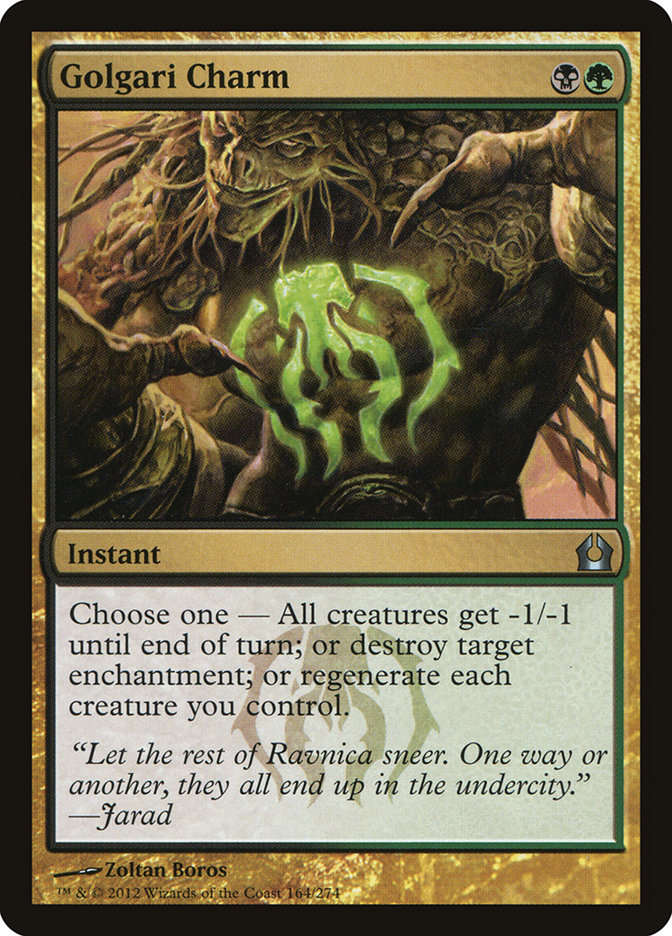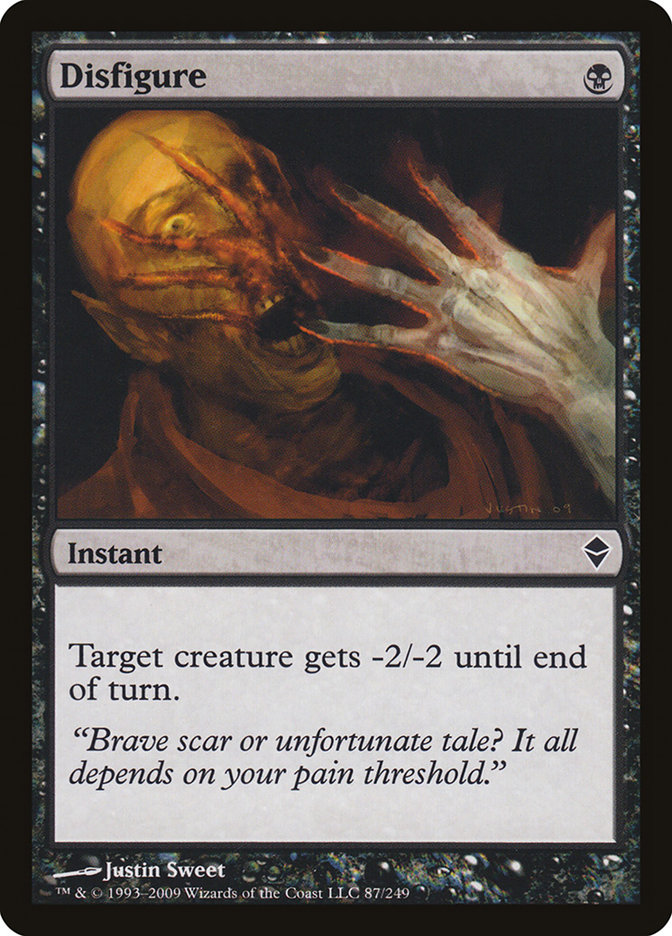You open up your hand:
So many options! How do you decide?
Last weekend I went 20-3 in games to win the StarCityGames.com Legacy Open in Seattle. My weapon of choice? Team America, or BUG Delver if you prefer. The deck is strong, consistent, and versatile. Every hand holds a Promise of Power only given to those who can solve the puzzle—but how?
But here I go starting in the middle! My mama always told me it’s polite to get to know who you’re talking to a little before starting in on the important stuff. I recently moved to Seattle, Washington by way of Atlanta, Georgia, though I’m originally from Niceville, a small town in lower Alabama (colloquially known as “northwest Florida”). I started playing Magic around Shards of Alara, but it wasn’t until I moved to Atlanta for college that I found the competitive Legacy scene. I played Ad Nauseam Tendrils and The Epic Storm almost exclusively for two years, taking breaks only for sweet (bad) Griselbrand decks. I made day 2 of Grand Prix Atlanta with an awful Griselbrand Show and Tell Storm deck and helped to develop and popularize the best named deck in the format, Tin Fins (bless its heart). Once I moved to Seattle, the concentration of blue mages was too high for me to enjoy playing combo, and True-Name Nemesis put the nail in the coffin, giving every fair deck more sideboard room for anti-combo cards. I’ve switched to a different combo: Delver of Secrets and my deck.
Magic steered my academic interests toward Computer Science (specifically Artificial Intelligence), and in turn my studies have influenced how I think about the game. The big eureka moment for me was when I realized why humans play difficult games so much better than computers: Strategic Planning! I know, I know, obviously computers can’t Brainstorm. But what does strategy mean in the context of competitive Magic? How do I turn strategy into #winning? I’ll show you with some examples from this weekend.
Strategy can mean several things in Magic, but the most important by far is role assignment. Made famous by “Who’s the Beatdown?,” many players know the basic roles of beatdown versus control—who is the aggressor and who has the inevitability? BUG Delver can play both roles. It can dramatically reposition itself from the sideboard, but it can also leverage cheap cantrips to find the cards for the role it wants to assume within a game!
In my mind, BUG Delver is the best deck in the format at fluidly adapting to the situation at hand, naturally shifting between control, midrange, and beatdown. This Shifting Wall of offense and defense allows you to target the opponent’s weakness, whether it’s their hand, their spells, their creatures, or their life total. This gives the deck more game than a more linear deck against a diverse field and prevents the opponent from formulating an easy plan to beat you. It also has one of the best sideboards in the format, regularly bringing in six or more high impact cards and leaving the opponent with naught but a Wild Guess as to what role to take.
It probably comes as no surprise that I believe BUG Delver the best deck in the format (#scoreboard). As an aside [Note to editor: Is Turn Aside too much of a stretch?] [Note to Greg: Not yet, but we’re getting into some Close Quarters here.], I feel like this is why Melira Pod is the best deck in Modern—it can assume a creature beatdown or disruptive board control role like a midrange deck, but it can also assume the combo role if it senses weakness. Tempo Twin is similar, but I believe its secondary roles are weaker.
Anyway, back to Legacy. Here is my list:
Creatures (14)
Planeswalkers (1)
Lands (20)
Spells (25)

That’s a lot of weird numbers! Three copies of Daze? One Spell Pierce? Two copies of Disfigure maindeck?! How in the world did I win with such an inconsistent pile?
There are two key insights—Brainstorm and Ponder are unreal good, and many of the cards serve similar roles. Before I move on to talk about specific choices, I’d like to give a shout out to Bob Huang (akatsuki on The Source) for writing an excellent primer on BUG Delver and explaining the shell and some individual card choices.
Maindeck Choices
4 Deathrite Shaman, 4 Delver of Secrets
Deathrite Shaman is the best creature in the format. Delver of Secrets comes close. Both are cheap evasive threats that can win on their own. You always want to draw them, and they’re good in multiples.
The 3 Goofs, The 3 Stooges, & The Evil Witch
Good old Tarmogoyf is a brick wall, but I expected many opponents to have Swords to Plowshares and Rest in Peace, both of which line up well against Goyf. Dark Confidant and True-Name Nemesis (aka Dr. Evil) are good in those matchups. Tombstalker is a house against RUG and BUG decks and is a good way to close once you’ve demolished a white mage’s hand. Liliana of the Veil is a removal spell that also will end the game against some white decks, especially Miracles. Liliana and Dark Confidant are also very good against combo. There really is no clearly superior threat, so I simply chose to run a split.
3 Daze, 3 Force of Will, 1 Spell Pierce
This is the blue disruption package. Force gets boarded out more than half the time because it’s pretty awful against black decks and many white decks. I wanted to have an edge in the fair matchups where I feel BUG can be a little behind. I rarely keep in more than two copies of Daze post-board against fair decks, and Spell Pierce is better against combo anyway, so I just pre-boarded one Pierce. One thing to keep in mind with Force of Will is that the blue count is low (around twenty) maindeck. Once you start boarding out Dazes for removal spells, Forces have to go too.
2 Thoughtseize, 3 Hymn to Tourach, 2 Disfigure, 3 Abrupt Decay
This is the black disruption package. BUG Delver is glutted at the two-drop spot for a tempo deck, so I felt like lowering the curve would more than make up for the reduced power and versatility. Cantrips will help dig to relevant spells, so having cheaper spells to dig to can mean the difference between passing with a land unused and being on curve. Also, I have one more each of the discard and removal spells than the stock four-ofs because they’re so much better than blue disruption against fair opponents.
Sideboard Choices
1 Envelop, 1 Flusterstorm, 1 Spell Pierce
Look, I just really wanted to play with my German Flusterstorm. It should be a Spell Pierce or Envelop. These cards are the rock stars of the sideboard, coming in against most opponents. Against combo they replace dead removal, and against removal-heavy decks they replace Force of Will. Envelop is a house against Miracles and combo.
1 Vendilion Clique
You often want to lessen graveyard dependence against white decks, and it just so happens that Vendilion Clique is awesome against Stoneforge Mystic. As a bonus, it’s both blue and relevant against combo. A match made in heaven.
1 Force of Will
I really hate Force of Will—until I get paired against Tin Fins. Then I love it.
1 Sylvan Library
This card is very maindeckable, but something had to give. This is the green Ancestral Recall; don’t leave home without it! I drew three cards in each of my post-board Miracles games, making it pretty hard for them to get back in the game. Bring it in against non-tempo fair decks and slow combo decks.
1 Krosan Grip, 1 Maelstrom Pulse
Batterskull is enemy number one out of white decks, so it’s necessary to have two answers. Maelstrom Pulse is a concession to the Miracles matchup. Jace, the Mind Sculptor and Entreat the Angels are their win conditions, and Pulse deals with both.
2 Golgari Charm
One of the three best reasons to be in Golgari (behind Deathrite Shaman and Abrupt Decay). It’s incredibly versatile, and anyone playing Marsh Casualties needs to rethink their life choices.
2 Surgical Extraction
I was tired of losing to Lands and Tin Fins. Grafdigger’s Cage would be better against Elves and Dredge though.
1 Disfigure, 1 Abrupt Decay
Both are necessary and great against creature decks.
1 Liliana of the Veil
This card is awesome, but I don’t like bringing in more than three or so three-drops. You only have twenty lands after all!
Some cards that just barely missed the cut include Winter Orb for Miracles and Jund (it isn’t versatile enough now that even the Stoneblade decks are playing Deathrite Shaman) and Submerge (not as versatile as Disfigure or Golgari Charm, though great against Lands).
Moving forward, I think I might consider cutting Dark Confidant for Tarmogoyf if I don’t expect the top players to be playing Miracles or combo (like Seattle). Otherwise, I’m very happy with the maindeck. The Flusterstorm should probably be Spell Pierce, and the sideboard should also be tuned to suit your metagame.
You might have noticed that I mentioned beating white decks several times. That’s for a reason!
Not only are Stoneforge Mystic and Batterskull strong against your attrition strategy and Abrupt Decay, but Miracles can be difficult to interact with meaningfully. What’s more is that I expected most of the good players to be playing white. If you want to pick up BUG Delver, these matchups are the most important to master and the most difficult to find the correct role in. Let’s get back to our discussion of role assignment and strategy by talking about a couple of matchups.
Esper Stoneblade, Deathblade, Deadguy Ale/Junk/Red all play out similarly. They will all attempt to put pressure on your hand while forcing you to catch up to efficient removal and an inevitability machine (Batterskull). The best ways to win are to put them on the back foot with a swarm of gigantic creatures (tempo role) or shred their hand then drop a finisher (control/midrange role).
U/W/R Delver is an unusual matchup where you’re usually the control but tempo is still extremely important. I keep in Force of Will on the draw in order to buy back the needed tempo to stabilize. Trying to play the beatdown is usually difficult because of their eight one-mana removal spells.
Death and Taxes is actually a pretty easy matchup if you know how to play it. They try to be the control and are pretty good at it game 1 thanks to the one-two punch of Phyrexian Revoker and Wasteland. However, games 2 and 3 we get to cut dead countermagic for Golgari Charm and removal, and then we get to play the control role. As it turns out, the creature control deck is weak to two-mana instant speed sweepers.
Miracles is a tricky matchup. It’s critical to know when to “push” (dump a bunch of creatures and hope they don’t have Terminus) and when to bide your time. Force them to have the answers while denying them the resources to do so. They are almost always the control role. Also, Golgari Charm is typically not worth bringing in. It’s awful against anything but Rest in Peace and Counterbalance and many Miracles players don’t leave in either. I won with 1/2 beats more than once.
An awesome example of choosing your strategy comes from my semifinals match against local hero Adam Ruprecht. Game 1 I led with Thoughtseize over Delver of Secrets turn 1 (hoping to nab Brainstorm or Sensei’s Divining Top) and saw double Brainstorm, Terminus, Sensei’s Divining Top, Thopter Foundry, and two lands. My hand was Delver of Secrets, Deathrite Shaman, Abrupt Decay, and some blanks. At that point I knew the best way to win this game was to tempo him out—he’s land light, so he needs to dig to find lands and removal spells, and if I he’s spending time doing that, then Thopter Foundry won’t matter.
I took the Terminus and then played Delver and Deathrite next turn. He dropped Counterbalance into Stoneforge for Batterskull, and for two turns in a row I declined to Abrupt Decay or even cast spells, instead beating for three and draining for two. Only when he had invested four mana and two turns into making a Batterskull did I finally use the Abrupt Decay on the Germ token. This allowed him to safely drop Thopter/Sword, but it was too late.
RUG Delver is an intricate dance. Often they try to take the beatdown by playing a cheap creature and leaving up Stifle, so to win you just need to buy time to Hymn to Tourach and Abrupt Decay them into oblivion. Racing is usually a poor choice.
My third game against RUG Delver in round 3 is a good example of this dance. My opponent started out strong with a Nimble Mongoose but didn’t have a second land, while I resolved a Deathrite Shaman. Deathrite allowed me to start destroying his hand with discard, but a topdecked land allowed him to present a Tarmogoyf. Now on the back foot, I attempted to buy time by deploying a Goyf of my own in defense mode with only Underground Sea and Deathrite as mana sources, conveniently blanking the Submerge in his hand.
I cantripped some more, and then finally the time was right—I Thoughtseized the Submerge, fetched a Tropical Island, Abrupt Decayed his Goyf, and played a Delver of Secrets. All of a sudden, I was the beatdown, and he was on the defensive. He wasn’t able to recover the initiative before I beat him down with gigantic creatures and Deathrite activations.
I’m afraid that’s all I have time for in terms of matchup analysis, but I will leave you with one more story about role assignment.
In round 5 against MUD, I Force of Willed a turn 1 Chalice of the Void and Thoughtseized my opponent, seeing Wurmcoil Engine, Bottled Cloister, and double Grim Monolith. I decided that the only way to win was to beat down with the Delver of Secrets in my hand while forcing him to tap out every turn, so I took the Wurmcoil. He drew about eight extra cards with the Bottled Cloister over the course of the game but spent several turns tapping out for Crucible of Worlds and Trinisphere, while I sat back on removal spells for his Lodestone Golem and Metalworker.
At eight life, he decided his role was the beatdown—he played Sundering Titan to nuke all but one Underground Sea. Unsurprisingly, Delver and Deathrite Shaman got there after I took seven to the chin. After the game he commented that he should have played Wurmcoil sooner! If he had realized that he was the control, then he might have realized that the only important resource was his life total, as he had inevitability with Bottled Cloister and huge monsters.
I hope that this article has given you some appreciation for the importance of choosing the strategy as well as an understanding of why decks like BUG Delver that can fluidly change roles are so powerful. BUG Delver can be a strong tempo, midrange, and control deck, sometimes even in the same game. In order to succeed, spend time thinking about how each deck plans to win, and then think about how to attack that. BUG Delver has the tools if you learn to use them.
Props:
- The Seattle/Bellevue Legacy crew for being awesome and #crushing.
- Head Judge Scott Neiwert running a great tournament at his first HJ of this size.
- Hello, Cupcake. They were delicious and adorable.
- The trophy being big enough to hold a pint and then some.
- My friends being excited for me.
Slops:
- Tacoma not being Seattle.
- White-bordered duals.
- My friends being too excited for me.

